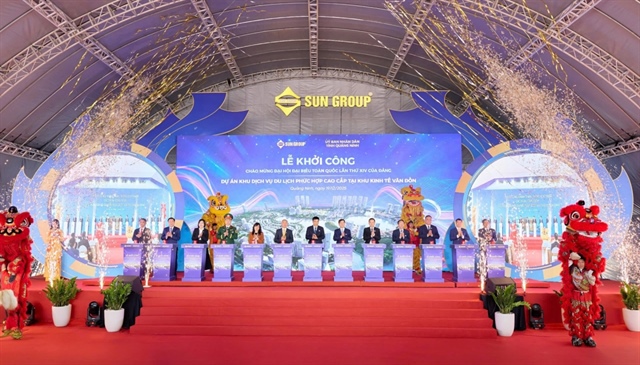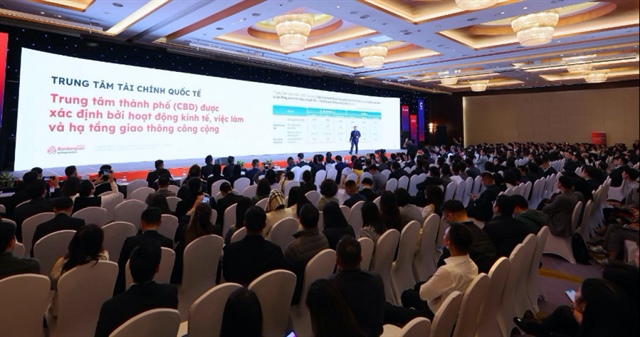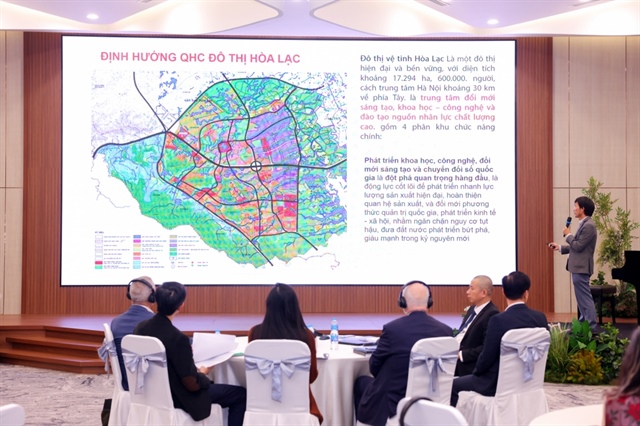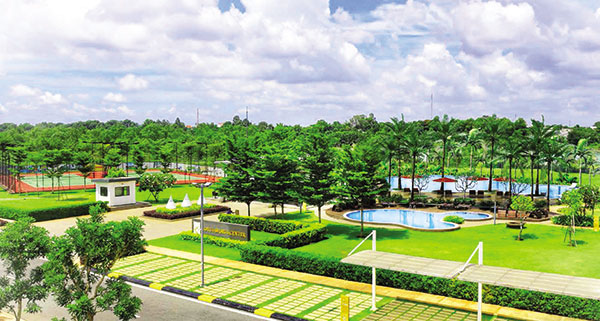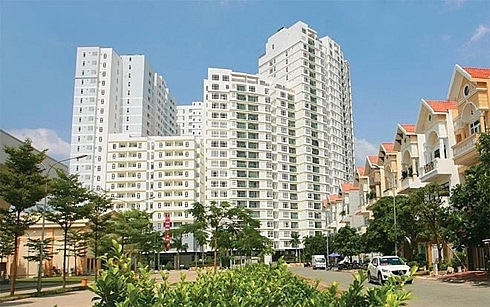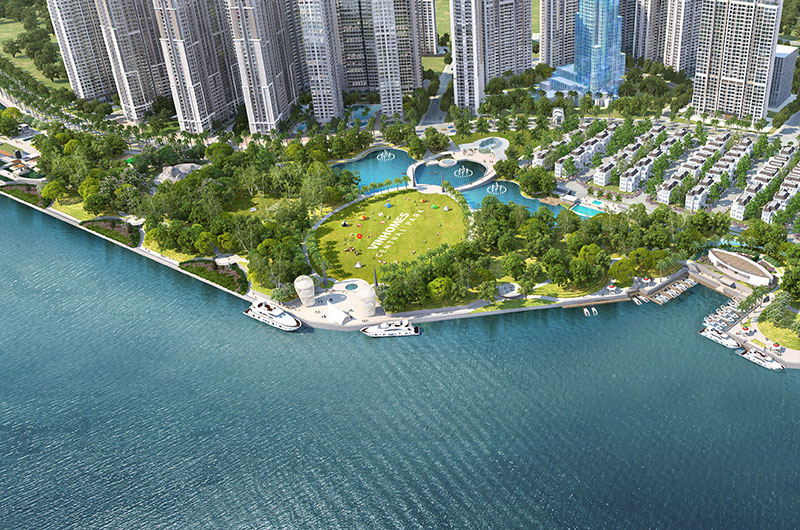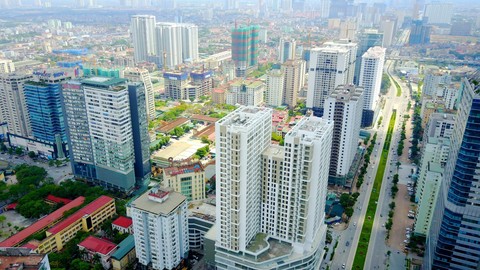Mountain-view real estate shows bright prospects
Mountain-view real estate shows bright prospects
After projects started landing en masse at beachfront locations, many real estate developers are shifting their attention to mountain sites to build new-style resort properties. Mountain property investment, however, is not an easy game.
From beachfront properties…
The 2016-2017 period saw booming development in beachfront resort properties. Developers have been continuously launching new projects on the market. Localities having vast potential for ocean tourism like Danang, Khanh Hoa, and Kien Giang appeared as magnets to investors. Of them, Nha Trang and Danang alone accounted for 70 per cent of the supply and generated the most successful transactions in the nationwide resort property market last year.
Other locations such as Quang Ninh and Haiphong in the north, Thanh Hoa, Quy Nhon, Quang Nam, and Binh Thuan in the central region have also been attracting sizable resort projects from major local developers like Vingroup, Sun Group, FLC Group, CEO Group, MIK Group, MBLand Holdings, and Hung Vuong Corporation.
Scrutinising the recent beachfront resort property boom, director of CBRE Vietnam’s Hanoi Branch Nguyen Bich Trang commented that as Vietnam features a long coastline and Vietnamese people, particularly northerners, are fond of cavorting in the sea, the beachfront real estate segment has ample potential for development.
…to mountain real estate
The development of mountain real estate was reported to come on the heels of the booming beachfront resort property market. In fact, the mountain real estate segment started seeing successful development long ago, with the success of a string of projects like Ba Na Hills (Danang), Mong Mo Hill (Dalat in the Central Highlands province of Lam Dong), Mang Den Eco-resort (Kon Plong in the Central Highlands province of Kon Tum), Topas Ecolodge and Sapa Jade Hill (Sapa in the northern province of Lao Cai). This segment, however, had sunk into oblivion after the rise of beachfront real estate and only recently started resuming growth in response to the robust development of the tourism sector.
Despite their plentiful advantages, beachfront real estate has many limitations to northern visitors. Ocean tourism is often seasonal, and northern people usually spend at least three days for each trip. Meanwhile, mountain resorts or those in the city outskirts such as Ba Vi, Soc Son (Hanoi), Hoa Binh, and a little further down the road, Sapa (Lao Cai) are only a few hours by car, allowing visitors to indulge in day-trips.
Big attraction
While beachfront resorts focus on several localities possessing stunning beaches, mountain resorts also have spectacular destinations.
According to deputy general secretary of the Vietnam Real Estate Association Nguyen Van Dinh, developers often land mountain property projects in areas with a nice view, natural green setting, convenient transportation, and distinct food and local culture.
“With the synchronous development of the transportation system, it is now far more convenient to reach target destinations. There are now multiple sites satisfying such requirements, providing a catalyst for the robust development of mountain real estate,” Dinh said.
According to Trang from CBRE Hanoi, infrastructure development and growing car ownership have resulted in good connections between Hanoi and other provinces, contributing to the strong development of mountain resorts, with Lao Cai’s Sapa as a typical example.
“With a sharp year-on-year growth in the number of visitors, developers might craft mountain or suburb resort property projects for future development. I believe this segment has bright development potential,” Trang said.
Meanwhile, Do Thi Thu Hang, associate director of Research & Consultancy at Savills Hanoi, said rapid tourism development has made the growing presence of resort properties necessary, along with any kind of products having the capacity to help developers diversify their offerings and accelerate the process of recouping investment capital.
“Currently, only a handful of localities have the potential for mountain real estate development, including Sapa, Tam Dao in the northern province of Vinh Phuc, and Dalat, thus the supply remains limited. In the future, more developers will pour money into developing this sort of projects in similar locations,” Hang said.
Myriad challenges
While beachfront real estate features nearly identical styles, mountain real estate carries different features, meeting visitors’ abundant requirements. Investment into the latter, however, proves challenging on account of the costly construction and sophisticated design of each item. Potentially, each mountain real estate product could be a masterpiece of design, status, and the developers’ vision.
An engineer shared that the construction cost of a mountain real estate project is often higher than that of beachfront properties due to difficulties in building material transport and terrain complexity. Construction costs can go from double to quadruple of beachfront real estate.
Another challenging task to mountain real estate developers is harmonising the untapped beauty of mountain sites—a factor that intrigues visitors—while answering the demand for comfortable resort facilities.
“Regional and domestic studies on archetypal, successful projects show that to succeed with mountain real estate projects, it is vital to ensure visitors’ comfort and luxury, while maximising efforts to retain the unspoiled beauty of the natural landscape, for instance by using natural ingredients in design. In addition, there needs to be other factors, such as professional operators and distinct services to attract visitors, as well as competitive pricing,” Hang added.
Trang from CBRE Hanoi commented that for northern locations, the number of local visitors might significantly fall during winter months. Meanwhile, it is the peak holiday season for international visitors. Developers, therefore, need to count this in to be able to introduce suitable plans to attract visitors, ensuring their projects’ high occupancy rate.
Though it is a new and promising investment channel, industry experts assumed that it needs more time to prove investment efficiency and the real attraction of mountain real estate products.
“The success of this new type of real estate depends on a combination of factors. As far as I know, mountain real estate projects encounter more challenges than beachfront ones,” Hang from Savills Hanoi said.



